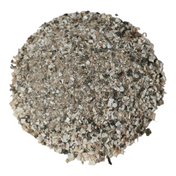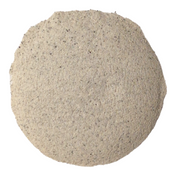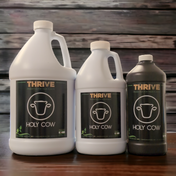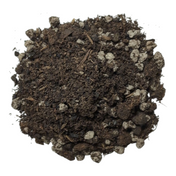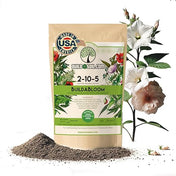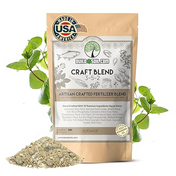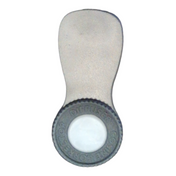Homemade Fish Fertilizer from GilCarandang.com
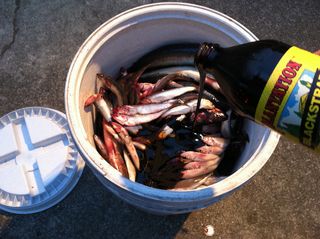
Fish fertilizer is an awesome product for promoting plant growth. It’s high in Nitrogen for growing plants, can be naturally produced, and is an awesome food for microbes! Fungi love this stuff. Fish fertilizer can be expensive in the store, but it is easily produced at home. This is a great recipe for making your own fish hydrolysate fertilizer. First lets look at the two main types of fish fertilizer:
Fish Emulsion
Fish emulsion fertilizer is made several different ways depending on who is making it. The important thing to know is that fish emulsion goes through two stages of processing. The first stage breaks down the fish parts using enzymes, proteases, or chemicals. Then, and this is the important part, heat is used to break it down further and allow oils and other things like amino acids to be more easily removed. It’s this second stage of processing that makes fish emulsion less advantageous than fish hydrolysate. Fish emulsion fertilizer lacks many oils and proteins that fish hydrolysate fertilizer has in abundance. So let’s look at that!
Fish Hydrolysate
Fish hydrolysate fertilizer generally starts out the same way as fish emulsion. It gets broken down using enzymes, proteases, or chemicals. However, fish hydryolysate doesn’t undergo the heating and skimming process that you get with the fish emulsion. The higher quality fish hydrolysates only undergo “cold-processing” which just means they are never heated enough to break down significant amino acid chains. Good fish hydrolysate also retains the fats and oils that microbes love!
Our Fish Fertilizer Recipe
This method of making fish fertilizer is awesome because it is a cold process, chemical-free, completely organic way to make fish fertilizer right at home. While fish emulsion lacks beneficial ingredients vital to the final product, this fish hydrolysate recipe preserves all those active ingredients. You don’t want to miss out on those oils that microbes love. Try this recipe.
How to make your own fish fertilizer:
- Buy a fish.
TIP: Any kind of fish will work. In fact, you might as well use trash fish, or fish discards like fish heads, guts, etc. I like to use whole fishes though as I think that makes for a better product.
- Now, ideally you would throw the fish into a blender to mash it up into little pieces. I cut my fish into 8ths or so and then chuck it into my kitchen blender but I’m a bit of a caveman. If you’re squeamish, buy a separate blender for this, just make sure it is powerful enough, mine is 500W and works fine for small-medium size fishes. Remember, the finer the fish bits, the more effective the fermentation.
- Add water. You can use a simple guide of 3:1 – 3 parts water to 1 part ferment material. 1 roughly 8in tilapia comes to about 500mL when ground up, so I add about 1500mL water.
TIP: ALWAYS USE NON-CHLORINATED WATER. Chlorine kills microbes. Simply let your chlorinated tap water sit for several hours, allowing the chlorine to dissipate. I let it sit overnight generally.
- If you are using a blender, blend up the mixture. The water helps keep it loose so it blends much better after you add the water.
- Add lacto bacilli to blended fish mixture. I use 2tbsp per L. You can use more or less if you want. 2tbsp/L is plenty though.
- Add 1/3 parts sugar. This should be 1/3 the amount of fish you’ve added. Sugar will be either molasses or normal cane sugar.
TIP: Try not to use cane sugar since it is chemically bleached. Raw(unrefined) sugar like muscovado is best. In the Philippines we use molasses because it is cheap, but any glucose source works – syrup, honey, etc. Just use whatever is cheap. Glucose gives microbes energy. Whatever you have access to cheaply, go for it.
- If using sugar, the equivalency is about 1KG sugar = 1L solution. So if you have 500mL like my tilapia, you want 1/3 of that in sugar. You’d use about 167g sugar, or roughly ¾ cup.
- I blend the whole mixture up a bit. It’s good to have it as fine as possible.
- Up to you how much you blend it, I blend until I don’t hear so many bones crunching in the blades of the blender.
- Now you have liquefied fish, sugar, and lacto. Pour this mixture into a container. Loosely cover the container. No need to seal, because the container will explode as CO2 is released by fermentation. You just want to make sure other things don’t get into it. I use a container with a lid and loosely screw the cap on top (just make sure you don’t seal it because it WILL explode).
- The process takes anywhere from 3 weeks to over a month. How do you know its finished? By the smell.
- You know when it’s done when there is no smell anymore. During fermentation there is a nasty smell, but once completed, there will be almost no odor. You can open it, and put your nose right up to it. Take a whiff. Nothing but a faint vinegar smell. Now you know its done. Congratulations! You’ve made your own Fish Hydrolysate!
- Now, usually I transfer it to a smaller container, usually just a smaller water bottle, just for convenience. At this time, I use a strainer and a funnel to strain the bones and scales out of the hydrolysate. But don’t expect a lot. From a whole 8-10in tilapia, you will only get a little tiny pile of bones/scales. They will feel kind of rubbery, not brittle. Throw these in the compost pile or garden, they are excellent fertilizer and microbe food, already inoculated with microbes!
- Leave the cap on the strained concoction loose until you see no more little bubbles forming. Then cap it and store it for use as your own natural fertilizer.
How to use this fish fertilizer:
Mix 2tbsp/gal for applications.
Plants
- Use as a soil drench as opposed to foliar spray.
- Inoculate compost to boost fungal population. This is huge – major growth booster of fungus.
- Use in compost teas to boost fungal growth, add Nitrogen. Use at ¼ strength for this application(1/2 tbsp per gal).
- Mix in water when watering plants, as a natural fish fertilizer and to enhance populations of micro-organisms in the soil
Animals
- Mix with water for an effective protein/lacto boost for your animals. Some will really love the added flavor. Others will hate it.
This article was copied from http://gilcarandang.com/recipes/fish-fertilizer/
Check out the rest of the website they have!

